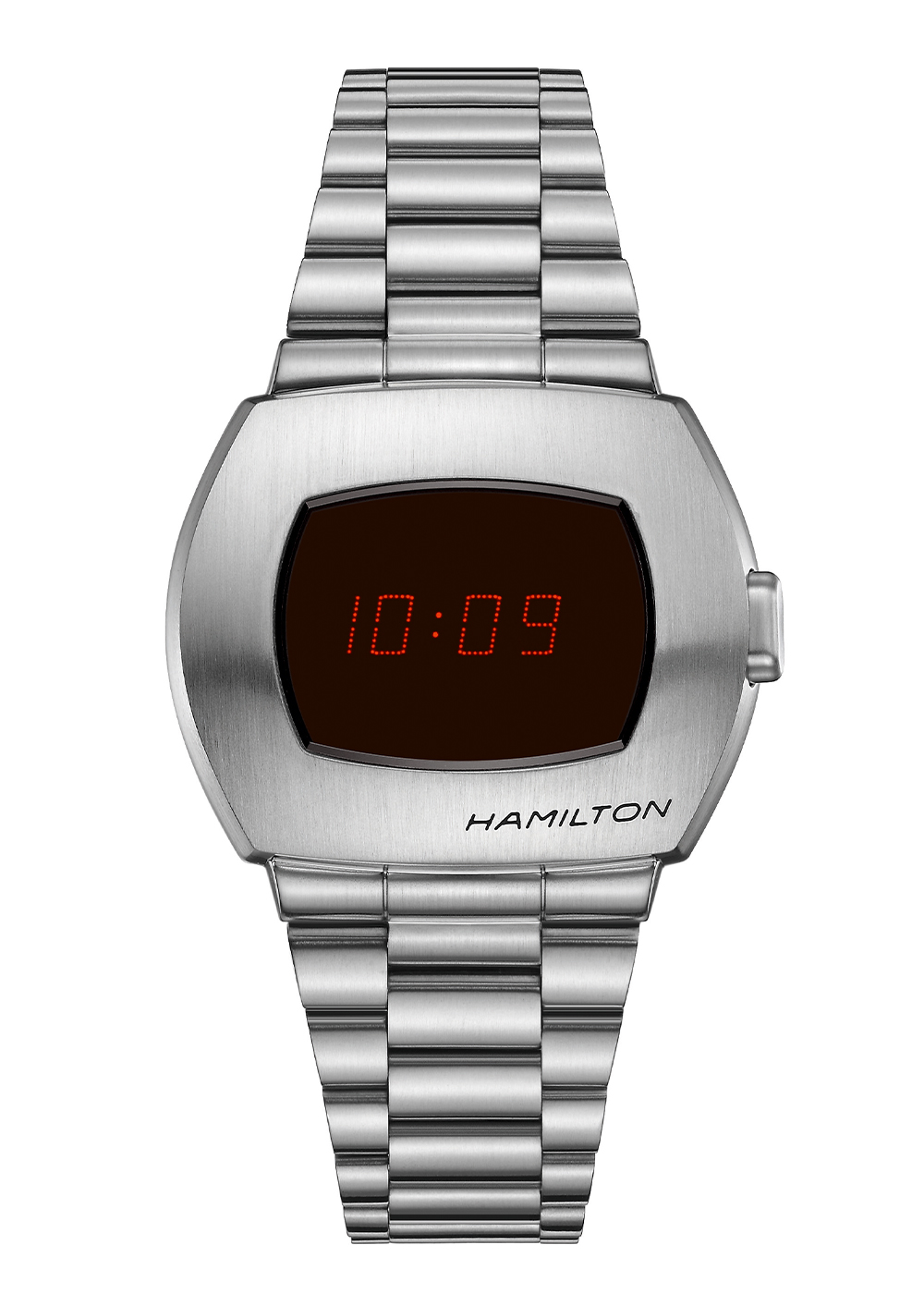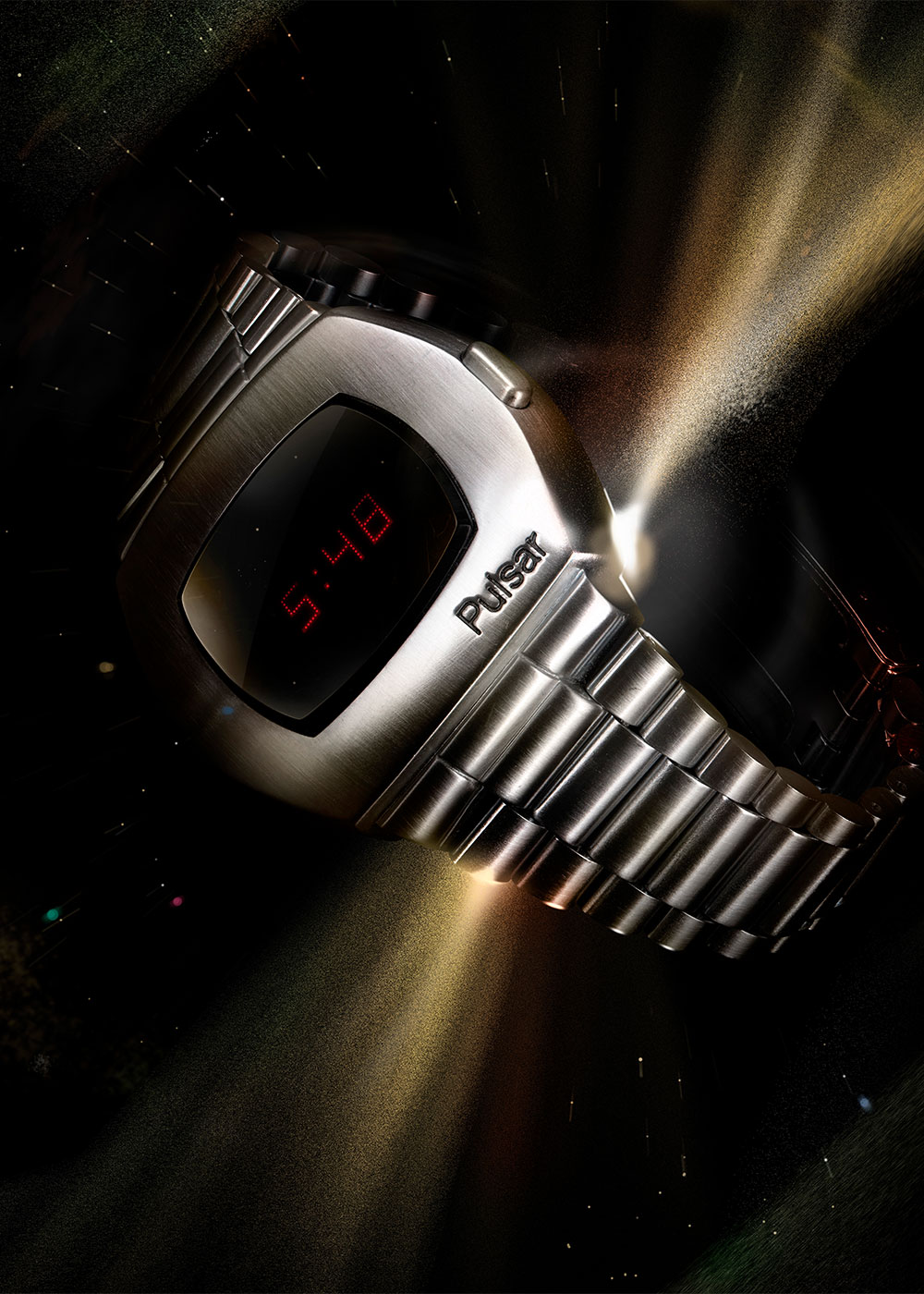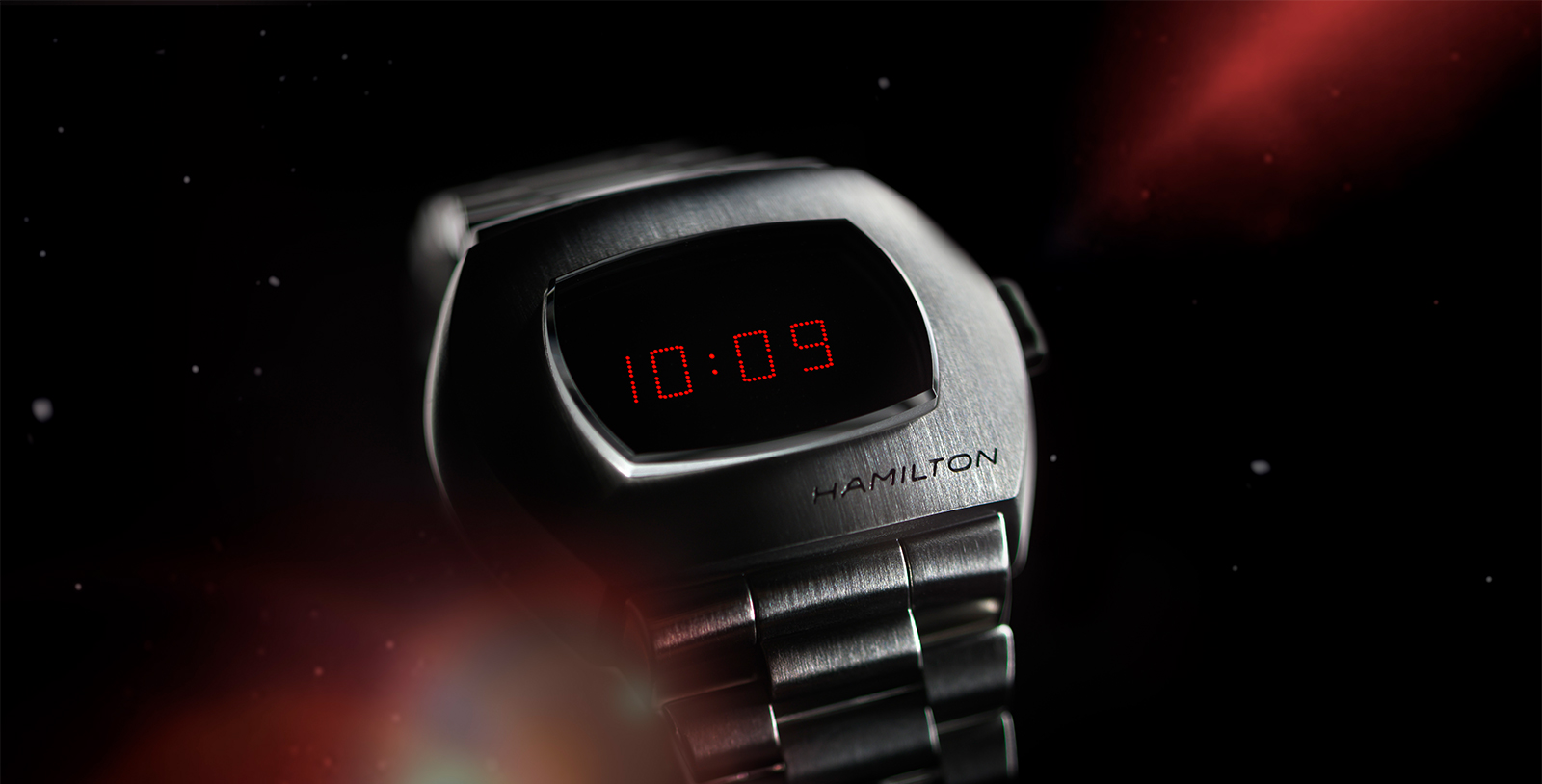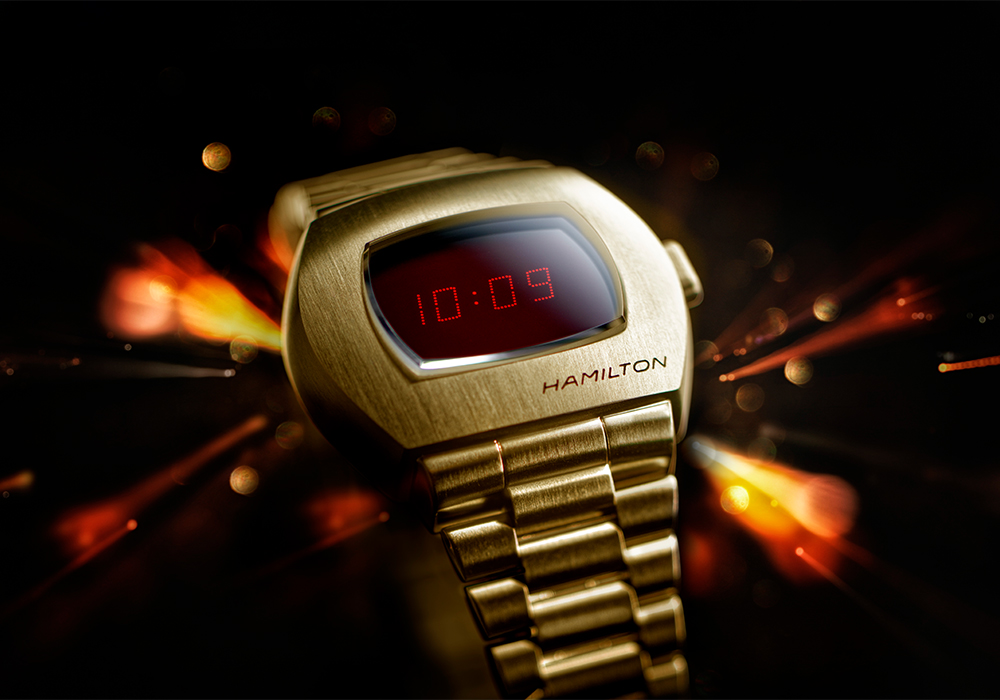With the Hamilton PSR, the World’s First Digital Watch Gets a Major Tech Upgrade
What’s gold, tells the time and costs as much as a small car? The answer, in the early 1970s, was the world’s first digital electronic wristwatch, the Hamilton Pulsar. This week, in celebration of the Pulsar’s 50th birthday, Hamilton is re-releasing their groundbreaking timepiece with the PSR and simultaneously giving watch fans everywhere a new reason to go digital.
 PSR 2020
PSR 2020
It might be hard to imagine now, in an era when we spend our days staring at screens embedded in everything from elevators to fridges, but in 1970 having a screen on your wrist was a very big deal. To put this in perspective, just a year earlier in 1969 (the year the first message traveled across the ARPANET) the world’s top watch brands had been locked in a race to release the world’s first self-winding chronograph. The announcement by American watchmaker Hamilton of a fully electronic digital watch the next year would have been like Tesla announcing they had made a flying car—the future was finally here.
 Pulsar 1970
Pulsar 1970
On May 6th, 1970, at New York’s Four Seasons Restaurant, Hamilton revealed the Pulsar for the first time. Named after pulsating neutron stars (it was their moonshot, after all) the new watch featured a cushion-like gold case and numerals displayed in red across an LED screen. The public got its first glimpse of the new “wrist computer” soon after, when a Hamilton engineer brought one to the set of the Johnny Carson show. Carson was reportedly unimpressed by the new technology, but plenty of other people couldn’t wait to get one, despite the hefty $2,100 price tag. Among the trendsetters to sport the first model, the P1, and its successor, the P2 in the early 1970s were Keith Richards, Joe Frazier, Elton John and the King himself, Elvis Presley.
PSR 2020
Fifty years later the world is a very different place, but the Pulsar’s appeal remains. The re-release retains the space-age looks of the original, with a few updates to the tech under the hood. In place of the P1’s LED screen, the new PSR a hybrid LCD and OLED display, which is more energy efficient and more easily readable in daylight. It’s available in two versions, one in steel ($970) and a limited-edition in yellow gold PVD ($1,300). Unlike the original, both are water-resistant up to 100m. We all probably spend more than enough time looking at screens these days, but this one is definitely worth an exception.











